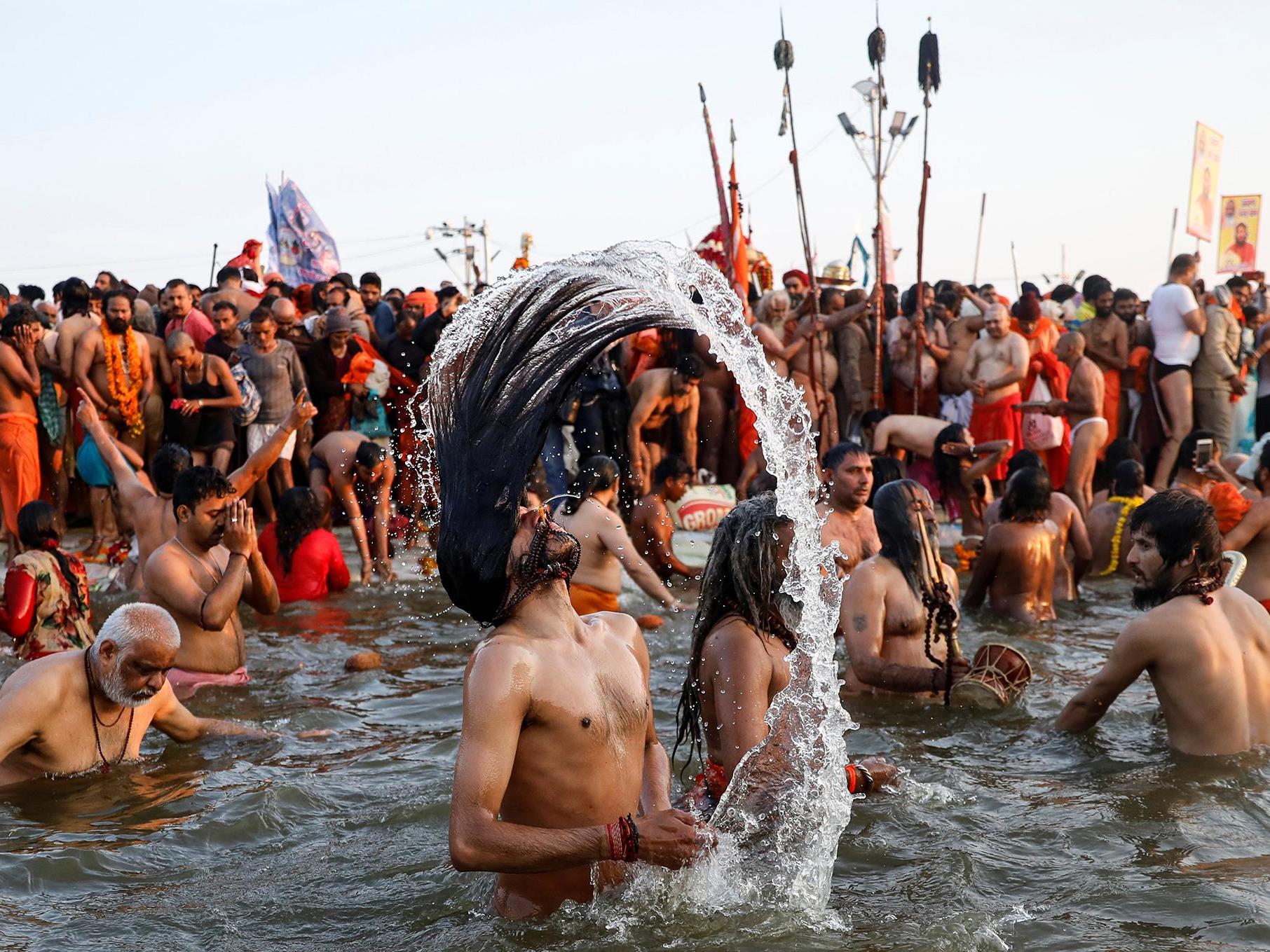Kumbh Mela: a view of the world’s largest gathering of people
Worshippers bathe together in order to be cleansed of their sins

Your support helps us to tell the story
From reproductive rights to climate change to Big Tech, The Independent is on the ground when the story is developing. Whether it's investigating the financials of Elon Musk's pro-Trump PAC or producing our latest documentary, 'The A Word', which shines a light on the American women fighting for reproductive rights, we know how important it is to parse out the facts from the messaging.
At such a critical moment in US history, we need reporters on the ground. Your donation allows us to keep sending journalists to speak to both sides of the story.
The Independent is trusted by Americans across the entire political spectrum. And unlike many other quality news outlets, we choose not to lock Americans out of our reporting and analysis with paywalls. We believe quality journalism should be available to everyone, paid for by those who can afford it.
Your support makes all the difference.More than 120 million people are expected to travel to the confluence of the rivers Yamuna and Ganges in the coming weeks.
At the site where Hindus believe Brahma offered his first sacrifice after creating the world, worshippers will bathe together in order to be cleansed of their sins.
While most of the millions of people will only visit the festival for a short time, the holy Naga Sadhus (numbering 200,000) will live at the site for the whole eight weeks where they will lead the bathing rituals.
Aside from the baths, worshippers will perform Aarti – an offering of light (usually from a candle) to the gods.
The festival has enjoyed increased government attention this year with funding having tripled from the previous 2013 event.
Although not all are pleased with this, as the funding increase is considered likely to be in aid of prime minister Narenda Modi’s campaign for the upcoming general election.
Nonetheless, this year’s festival sees the world’s largest temporary city being built to accommodate the worshippers.
At 15 square miles, the site is host to 2,132 medical staff, 12,000 police officers, 563,000 parking spaces and 122,500 toilets.
Festivities started on 15 January with the first and perhaps most significant bath of the whole festival, in which the Naga Sadhus roar as they charge naked, save for a covering of ash, into the holy waters, invoking their traditional role as defenders of the Hindu people.
Join our commenting forum
Join thought-provoking conversations, follow other Independent readers and see their replies
Comments